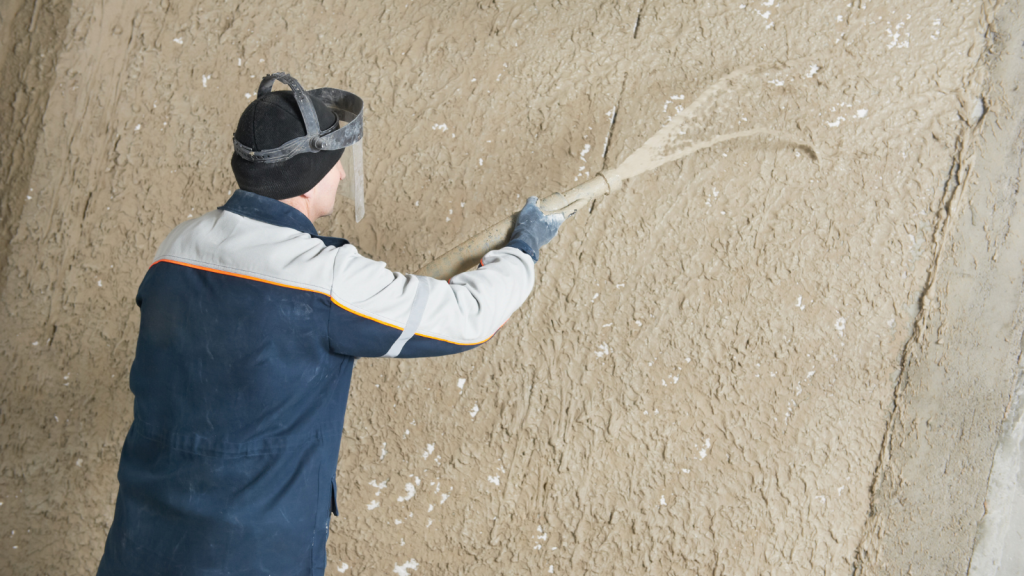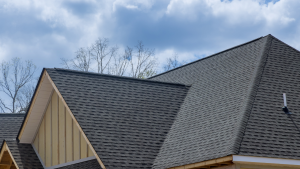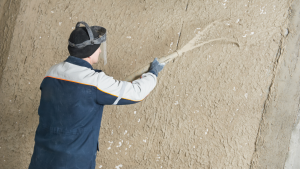To enhance your home’s energy efficiency, one of the most effective methods is incorporating insulated stucco systems. This approach not only provides a visually appealing and durable finish but also significantly boosts the thermal performance of your building. In this blog article, we will explore the insulation value of stucco, examine the intricacies of stucco insulation systems, and discuss the benefits and considerations associated with these systems for energy efficiency.
Don’t delay—contact Jersey Shore Stucco to schedule an inspection and prevent your stucco damage from escalating. Prompt action is necessary to avoid further complications. Thanks to our expert application of Stucco Today, your surfaces will stay attractive and durable for years.
What is the Insulation Value of Stucco?
Stucco, on its own, does not offer high insulation value. Traditional stucco typically has an R-value—measuring thermal resistance—of around 0.20 per inch. However, when stucco is combined with insulation materials, it can significantly improve a building’s thermal performance. Insulated stucco systems, often known as Exterior Insulation and Finish Systems (EIFS), incorporate a layer of foam insulation that greatly enhances the R-value. Depending on the type and thickness of the insulation used, these systems can achieve R-values ranging from R-4 to R-12 per inch.
Understanding Stucco Insulation Systems
Stucco insulation systems are composed of multiple layers that work together to enhance both energy efficiency and visual appeal. A typical insulated stucco system includes:
- Base Layer: This foundational layer, known as the substrate or sheathing, is the surface on which the insulation system is applied. It can be made of materials such as oriented strand board (OSB), plywood, or other suitable sheathing materials.
- Insulation Board: The core component of the system, this board is usually crafted from expanded polystyrene (EPS), extruded polystyrene (XPS), or polyisocyanurate foam. The thickness of this board directly affects the system’s overall R-value, with thicker boards providing better insulation.
- Base Coat: A cementitious or acrylic-based layer that covers the insulation board. This layer provides a robust, weather-resistant surface that contributes to the system’s durability.
- Reinforcement Mesh: Embedded within the base coat, this mesh adds structural strength and helps prevent cracks, ensuring the longevity of the finish.
- Finish Coat: The outermost layer, which is available in various textures and colors. This final coat not only enhances the aesthetic appeal of the building but also protects the underlying layers from the elements.
Benefits of Stucco Insulation Systems for Energy Efficiency
- Enhanced Thermal Performance: Insulated stucco systems significantly reduce heat transfer through walls, maintaining a consistent indoor temperature. This efficiency leads to reduced heating and cooling costs, contributing to substantial energy savings.
- Moisture Control: Designed to manage moisture effectively, these systems help prevent water infiltration, reducing the risk of mold and mildew. This moisture control is crucial for maintaining the structural integrity and longevity of the building.
- Durability and Low Maintenance: Stucco is a resilient material resistant to harsh weather conditions. When properly installed and maintained, insulated stucco systems can last for decades, requiring minimal upkeep.
- Aesthetic Versatility: Available in a wide range of textures and colors, stucco can be customized to match any architectural style. This flexibility enhances the visual appeal of your home while simultaneously improving its energy efficiency.
Considerations When Installing Stucco Insulation Systems
- Professional Installation: To achieve optimal energy efficiency and durability, it is essential to have the system installed by skilled professionals. Poor installation can lead to issues such as water infiltration and reduced thermal performance.
- Compatibility with Existing Structure: Assess the compatibility of the stucco system with your building’s existing structure before installation. Some older buildings may need additional preparation or reinforcement to accommodate the new system.
- Local Climate: Choose insulation materials and thickness based on your region’s climate. Different insulation types perform better under specific climatic conditions, so it’s crucial to select the right one for your area.
- Cost vs. Savings: While insulated stucco systems may involve a higher initial investment compared to traditional stucco, the long-term energy savings often justify the upfront cost. Evaluate the potential return on investment by considering your energy consumption and local utility rates.
Conclusion
Upgrading to insulated stucco systems offers a compelling combination of aesthetic appeal, durability, and energy efficiency. By understanding the insulation value of stucco, exploring the components of stucco insulation systems, and weighing the benefits and considerations, homeowners can make informed decisions to enhance their property’s energy performance. Investing in an insulated stucco system not only contributes to a more sustainable home but also provides long-term savings and increased comfort.
Whether you are constructing a new home or renovating an existing one, the advantages of insulated stucco systems make them a smart choice for the modern, eco-conscious homeowner. These systems blend beauty with energy efficiency, creating a superior solution for today’s building needs.




